Visiting Gallipoli

I’ve visited Istanbul several times – once in the mid 90s on holiday and several times on business with the odd weekend tagged on. I even began writing a thriller set there (sadly uncompleted). But I’d never approached Istanbul by sea from the Dardanelles.
When I was at school and fell in love with the poetry of Yeats, I never dreamt that one day I would be able to say I’d sailed to Byzantium.
“And therefore I have sailed the seas and come
To the holy city of Byzantium.”
This May, passing through the straits of the Dardanelles on a beautiful calm sunny day there was no sign of “that dolphin-torn, that gong-tormented sea”. Not that it stopped me standing on my balcony reciting the poems as we sailed towards our destination.
I’m not going to talk about Istanbul today, but rather the prime reason for my wanting to go to Turkey again. To cross over the strait from the town of Canakkle to visit the beaches of Gallipoli. Yes, I’m researching my next novel (now 45k words written – Ta-da!).
As I sailed through the Mediterranean, I was reading two 1915 war diaries. One was that of a British supply officer, a captain accompanied to war by his horse, while the other was of a young underage private, a signaller, experiencing leaving Britain for the first time. They had each, after some time in Egypt, at Alexandria (another place I visited on this trip) ended up on the Gallipoli peninsula.
The officer was there for the entire nine-month duration of the campaign. While he witnessed some terrible sights and the death and injury of numerous friends and fellow officers – and the loss of his horse in a shelling – his diary is peppered with descriptions of being entertained over good meals by senior officers and offered fine wines and brandy when hosted by the French navy, as well as invigorating swims and gallops along the beaches on horseback.
Life for the private was markedly different. His time in the Dardanelles was much shorter, arriving only for the August 1915 landing at Suvla Bay, the northernmost point of the Allied operations. As a signaller he was confined to a tiny hole in the ground, about two feet wide, close to the Front, and suffering long periods of isolation and hunger.
What struck me about both accounts was how, despite the terrible conditions, the utter failure of the campaign, and the death and destruction all around them, both men retained a sense of humour and incredible courage. While both realised early on that the campaign was doomed they never showed the slightest hesitation in seeing it through and doing what was expected of them. And while the officer may have had access to better food and drink (especially being a supply officer!) the flies which plagued the peninsula as a result of the unburied corpses and the stifling heat made no distinction between ranks!
My visit was not to the UK landing beaches at Cape Helles on the southern tip but to the central area where the Anzacs landed. We started off with a visit to the fantastic museum, housed in a new purpose-built structure and packed with fascinating artefacts and dioramas. All sides were represented – the Ottoman Turks, the British, the Anzacs, the French. Indeed, one of the marvellous things is the way Turkey has been so even-handed and respectful towards the sacrifices and suffering of the men on all sides. There’s no blame apportioned here. In fact, the largest number of casualties was sustained by the Turkish army, brilliantly and successfully led by Kamal Ataturk – the future post-Ottoman president of Turkey. Contrary to popular belief, in numeric terms the French and British casualties exceeded the Anzacs – but proportionate to population size, the Anzacs lost the most men. Gallipoli is also acknowledged as being the campaign that created and sealed Australia’s national identity.
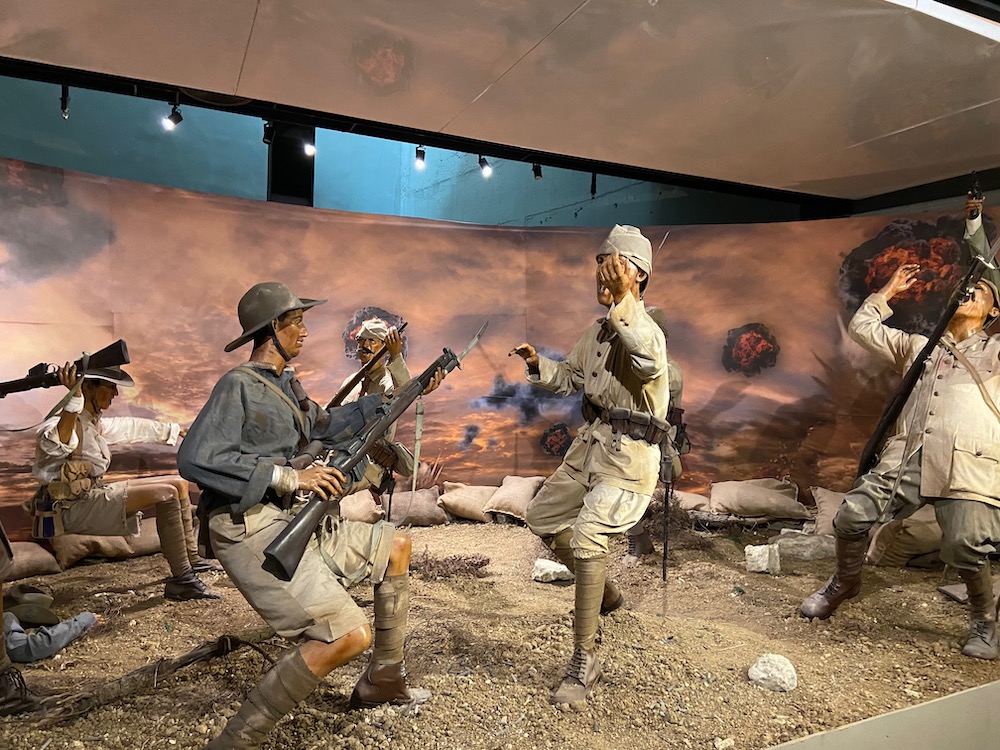
In the museum
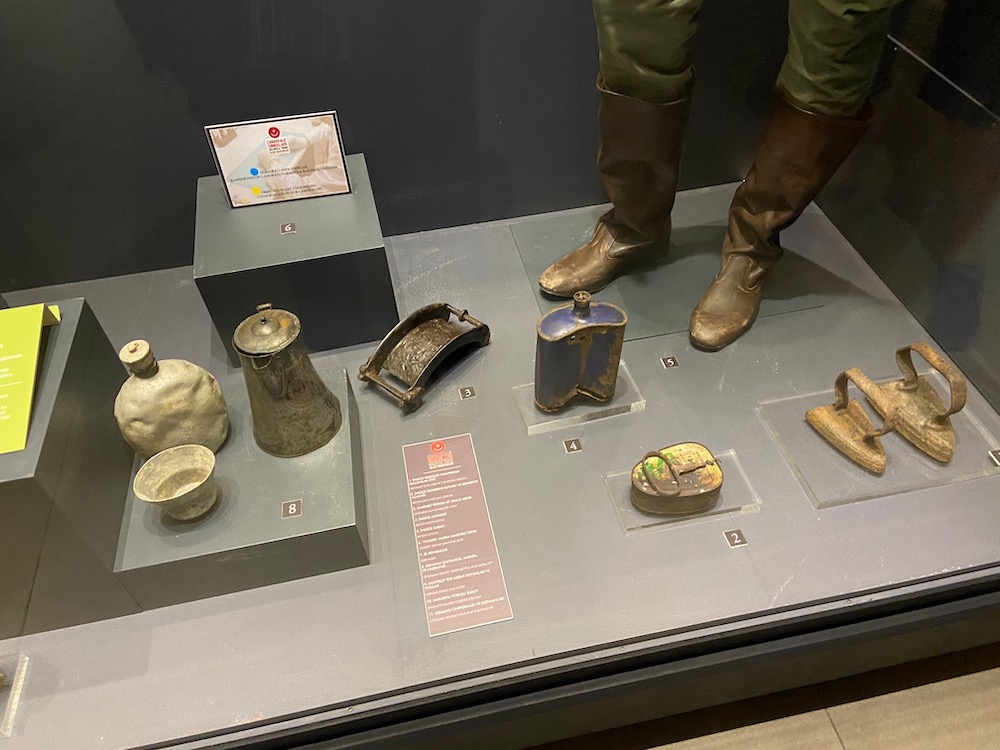
Museum artefacts
Our next stop was Anzac Cove. Stunningly beautiful – a limpid blue sea calm as a millpond, a grassy sward sweeping down to the beach and fringed by rugged hills behind. Hard to credit how different it must have looked during the 1915 landings, when the water was red with blood and littered with the corpses of men, horses and mules, the beach piled high with armaments and supplies and the sea peppered with ships, lighters and pinnaces – all under fire from enemy shelling.
The Gallipoli campaign was ill-thought out, bravely fought but doomed from the start. The terrain was the greatest enemy of all. The Turks were on the higher ground, leaving the Allies with the narrow strips of lower land beyond the beaches. The allied aim had been to reach Istanbul via the peninsula but they never got more than a few miles inland at any point. While the victory was Turkish, it was at a high cost to Turkey too.
We visited Lone Pine, scene of a famous battle by the Anzacs, who fought to capture this point with great courage and resilience. Here today there are small white memorial stones for the dead. The ages of most of the men here are shockingly young. I found it very moving and a beautiful commemoration of their sacrifice. In fact our guide told us that every day more bones surface on the peninsula. Now impossible to tell not only whose they are but of which side. Indeed, the whole peninsula is a graveyard.
On the hilltop there is a huge statue of Ataturk as well as a recreation of some of the Ottoman trenches. Through the trees are spectacular views towards Suvla Bay and the salt lake there. It brings home how vulnerable the British army was – in full view of the Turkish artillery up here on the heights.
I found the most moving thing of all was the message to the mothers of dead from Ataturk long after the war, now inscribed on a low wall above the beach at Anzac Cove. At the time there were false stories spreading in Australia about the graves of the dead on Gallipoli being disrespected by the Turks”. These are the words he wrote. I defy you not to shed a tear.
“Those heroes who shed their blood and lost their lives! You are now lying in the soil of a friendly country. Therefore rest in peace. There is no difference between the Johnnies and Mehmets to us where they lie side by side here in this country to of ours. You, the mothers, who sent their sons from far away countries, wipe away your tears; your sons are now lying in our bosom and are in peace. After having lost their lives on this land they have become our sons as well. Atatürk, 1934”
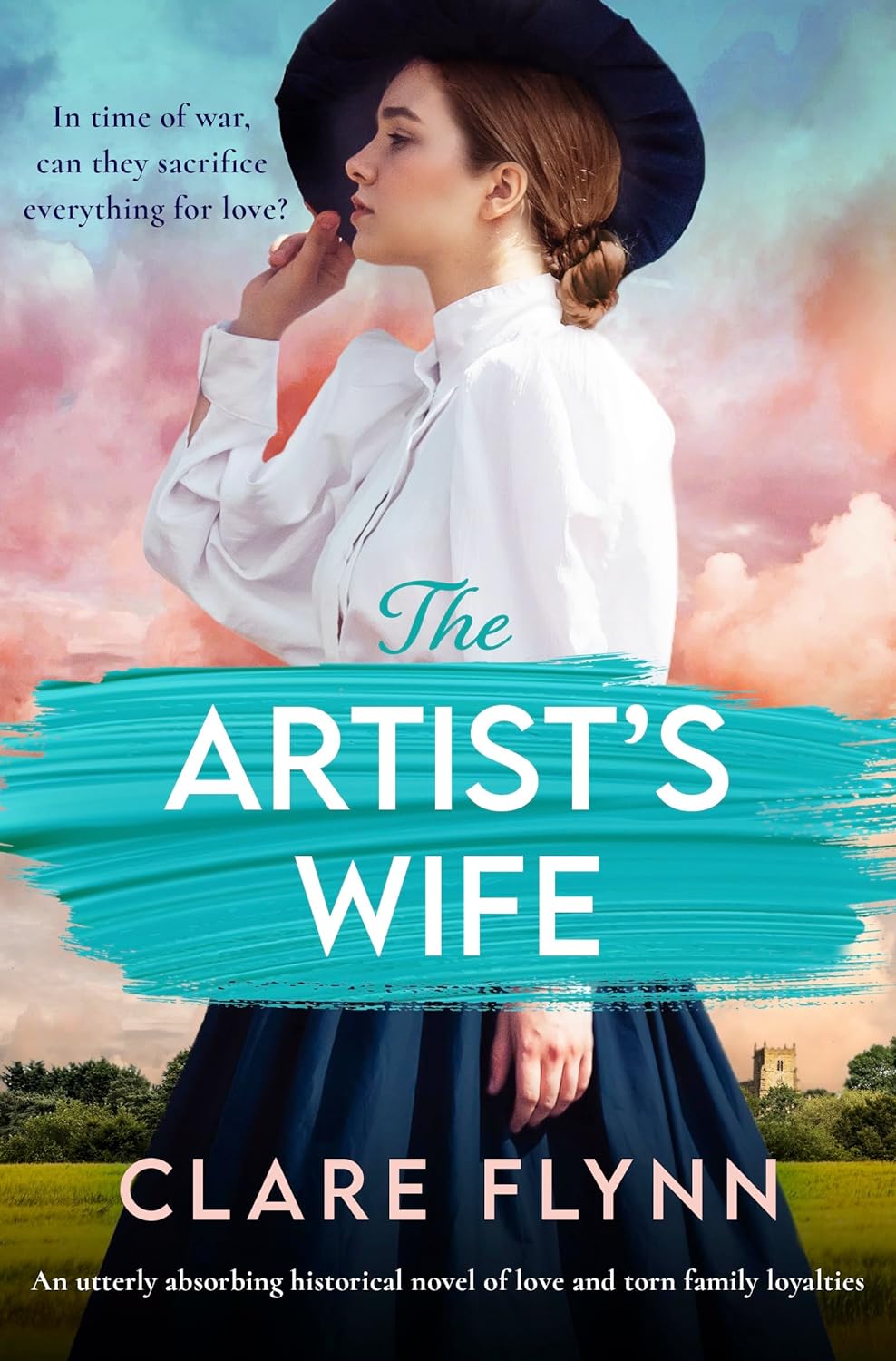
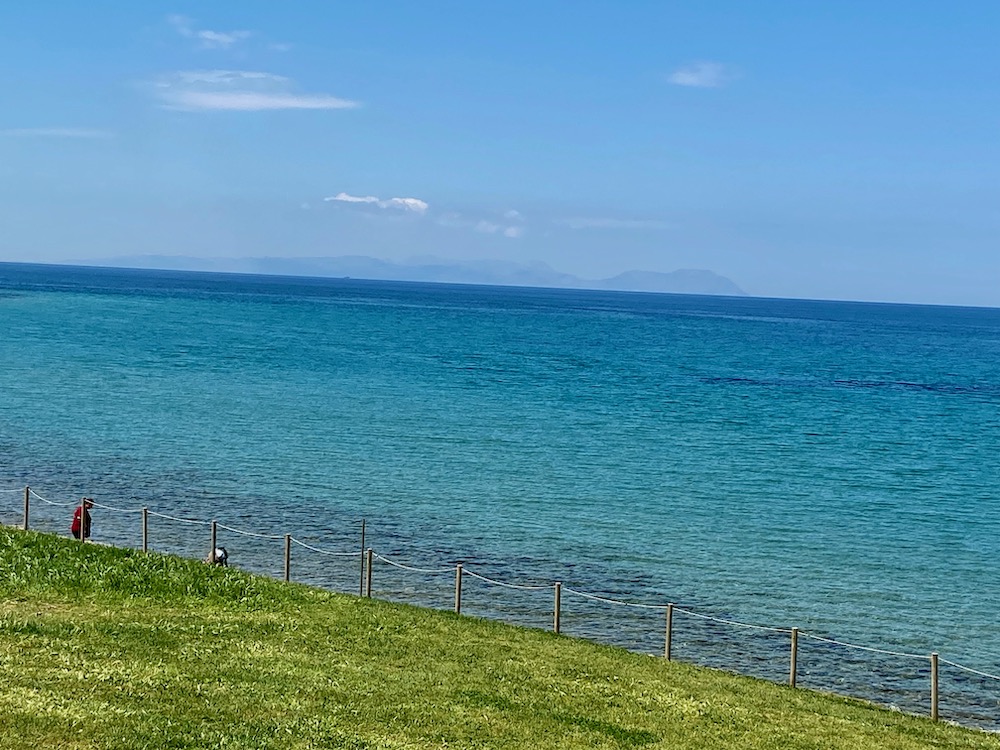
Anzac Cove

Lone Pine memorial

Suvla Bay and the salt lake
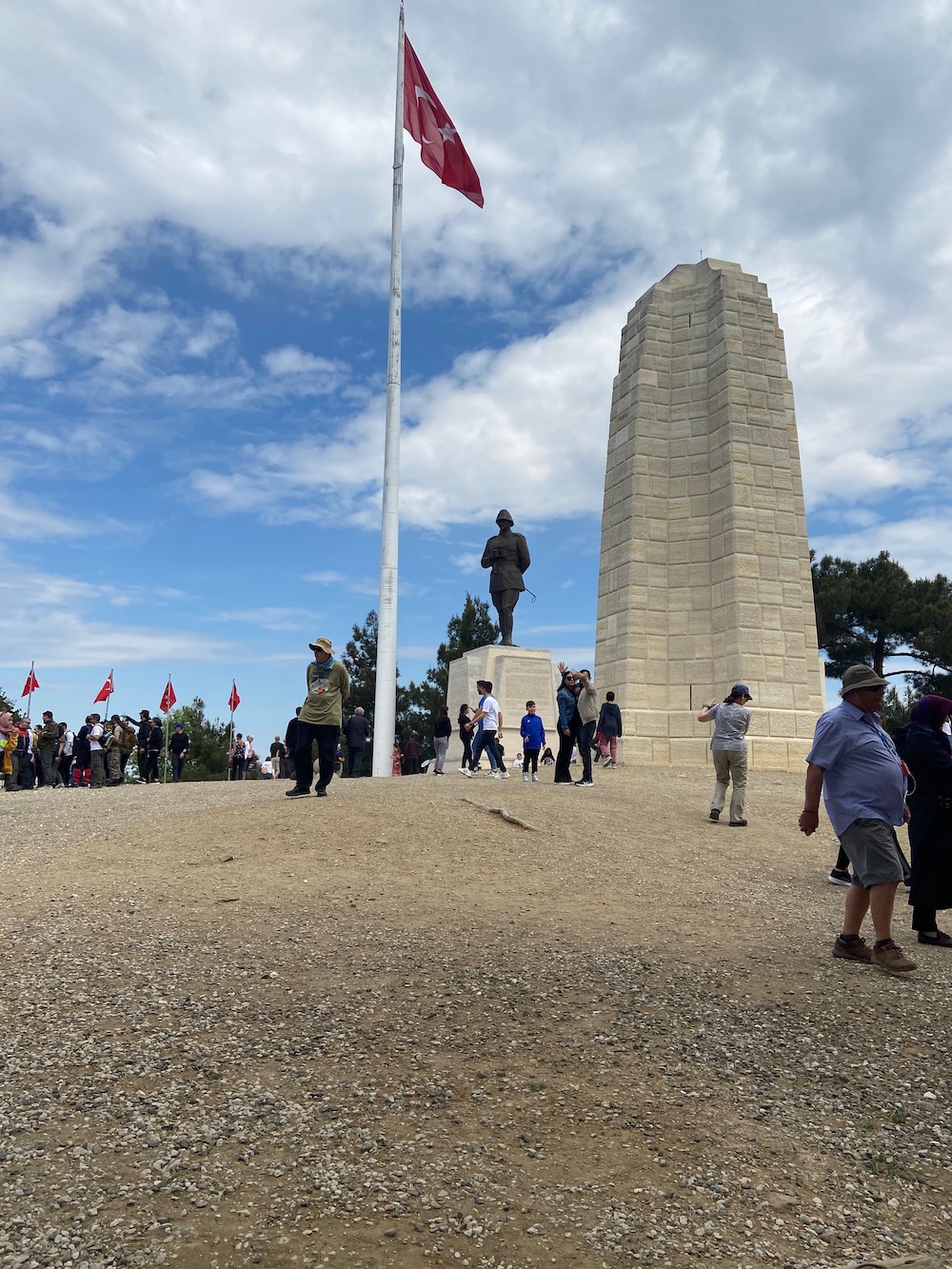
Ataturk statue


0 Comments